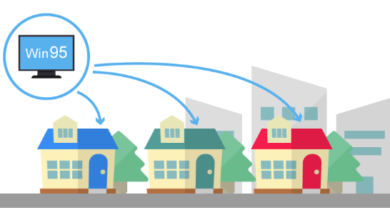15 activities and games to work empathy in children

Empathy is the ability to put yourself in another’s place ; It allows us to connect with your emotions and your experiences, and understand why you feel a certain way. In children, empathy allows them to generate lasting bonds, make friends , enhance their emotional intelligence…
This empathy in them can be fostered in different ways; one of them, through the game . We have selected 15 activities and games to work on in the little ones, especially from group activities. Take note!
1) Draw your partner
This activity, carried out in a group, consists of asking each child to write their name on a piece of paper. The person leading the activity will collect all the papers and randomly assign a name to each participant.
Each one will have to draw the partner who has been assigned, making a brief description of his character, his good things, etc., to finally deliver the drawing to that partner.
2) The box of feelings
In this activity, it is proposed to make “the box of feelings”; the children should leave in that little box the discomforts they have felt during the day, written on paper.
At the end of the day, each child will read a piece of paper at random and propose a solution to that problem, or make a nice comment to encourage the person who wrote it.
3) The spider web
This game is ideal for meeting new people. We need a ball of yarn and for the group of children to sit in a circle. The facilitator will begin, taking the ball up high and saying a characteristic that defines it . For example, “My name is Sara and I like to sing.”
He will then take one end of the thread and randomly pass the ball to a partner, who will do the same. At the end of all the presentations, a spider web will have formed between the children, which symbolizes the union between them .
4) The pampering of emotions
In this game, also in a group, each child must ask their partner to mime them. He will have to whisper a word related to an emotion in his ear , and the other child will have to represent it through gestures . A simple game useful for working on emotional and physical empathy.
5) Change of silhouettes
In this game, what will we do on a floor where you can draw (such as the schoolyard).
la, with areas suitable for it), we must distribute the group of children in pairs. Each pair will have some chalk.
One member lies down and the other, with the chalk, surrounds his body, marking the profile with precision. At the end, he will write the name of the profiled person.
Later, the lying child gets up and the “illustrator” takes his place, expressing how he feels in that silhouette. Finally, the children switch roles , and at the end of the game we ask each child how he felt about himself.
6) Put yourself in my shoes
Children should sit in a circle and remove their shoes . Each one will put their shoes on the partner on their right. The person leading the game will ask each child a series of questions, and each of them must answer as if they were the classmate who has left their shoes.
A very symbolic and visual game, ideal for literally putting yourself in someone else’s shoes.
7) The group song
The dynamic consists of the following: learn a song that talks about emotions together. Afterwards, they should all sing it together; the variant that each one sings a piece of it can be included.
8) A shared history
This game consists of creating a shared history . It can be done with the support of dice to create stories, the game called Story Cubes , very useful dice that must be thrown; Through the figures that appear in them, a story is created.
For example, each participant must roll a die and add a fragment of the story. At the end of everything, they must give it a title among all . If the story talks about emotions, better to work on empathy!
In addition, we can add that each child is a character in the story, and that they express how they would feel if they were another character.
9) Change of clothes
This game is ideal for working in the classroom . Four boys and girls should stand at the front of the class. They will put on their clothes and accessories (jackets, coats , scarves…). The rest will observe the clothes that each one is wearing.
Afterwards, the observing group should close their eyes; we will change the chosen children by putting clothes from one to another (exchanging clothes).
The group will open their eyes and must say what clothes were changed and to whom. A simple game but that allows you to work on mental flexibility and the ability to get out of your own focus, essential aspects to develop empathy.
10) Throwing the ball
In this game to work on empathy, the children stand in a circle; They can be sitting on the floor or in a chair. The one who directs the game begins by throwing a ball to one of them.
Whoever takes it must explain something about himself ; something that he likes, something that worries him, some question he has, some experience…
And when he throws the ball, at random, the partner who receives it must reply with an answer, a comment, a similar experience, a feedback on what has been explained… It is a fairly free game but it can be adapted.
11) Cine-forum
In this activity, the task will be to watch a movie together and at the end, have a debate with more or less directed questions, related to how the children believe that certain characters have felt in certain scenes.
For example, “how would you have felt when the main character meets his mother after so long…?”
12) Expressive faces
For this game, which can be done individually , we can use various materials, such as: a sheet with images of real faces, with emoticons…
The game can be played in various ways; for example, asking the child to imitate each face or emoticon (they can use the face and the body), to say the name of the emotion, to explain some situation that generated said emotion (for example, happiness , sadness, etc. ).
13) Sculpt a feeling
Knowing how the other feels is an important skill for developing empathy. In this game, you try to write the emotions on pieces of paper and put them in a box.
A volunteer will take out a first piece of paper and make the first “statue”, based on that emotion. The other children will have to guess what emotion it is.
14) A story made of images
This activity is also carried out in a group; Randomly, a series of images will be distributed that tell a story.
Each child will hide their drawing; The game will consist of the children being able to recreate the story in order , first listening to the others to find out where their own image fits into the story as a whole.
Thus, they must explain what their image contains and try to guess the order of the story, building it little by little together.
15) Music career
In this game, the children must stand next to each other, as if it were a race. We will play music . As the music plays , each child should think about if anything has ever happened to them that they can relate to that music; if so, they will step forward.
The child will have the option to share that memory with others , and to explain why the music evoked it. We can take advantage and ask others if they also felt that way at some point, in order to encourage their empathy.



